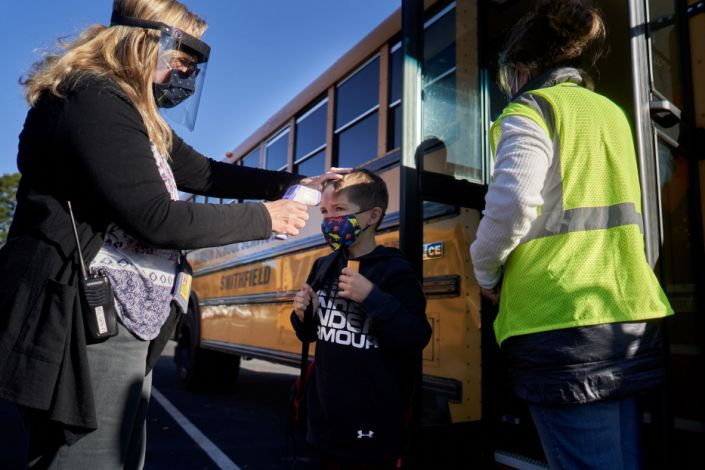Months into the school year, school reopenings across the United States remain a patchwork of plans: in-person, remote and hybrid; masked and not; socially distanced and not. But amid this jumble, one clear pattern is emerging.
So far, schools do not seem to be stoking community transmission of the coronavirus, according to data emerging from random testing in the United States and Britain. Elementary schools especially seem to seed remarkably few infections.
The evidence is far from conclusive, and much of the research has been tarnished by flaws in data collection and analysis. School reopenings are very much a work in progress. Still, many experts are encouraged by the results to date.

“The more and more data that I see, the more comfortable I am that children are not, in fact, driving transmission, especially in school settings,” said Brooke Nichols, an infectious disease modeler at the Boston University School of Public Health.-
That is not to say that younger children do not become infected — they do. On Wednesday, Dr. Michael Beach, a senior scientist at the Centers for Disease Control and Prevention, acknowledged that the agency’s guidance on school reopenings does not reflect the latest research showing that children can become infected with the coronavirus and transmit it to others.
“It does appear that children can become infected” and that children “clearly can transmit,” Beach, the agency’s deputy incident manager for COVID-19 response, told the House Select Subcommittee on the Coronavirus Crisis.
But the more pressing question for scientists and policymakers has been how often transmission from children happens. The bulk of evidence now suggests only limited transmission from young children to adults.
The risk among older children in middle and high schools is less clear, but many experts believe that these schools may be able to contain the coronavirus, provided the community prevalence is low and the schools take abundant precautions.
Source: Yahoo News
